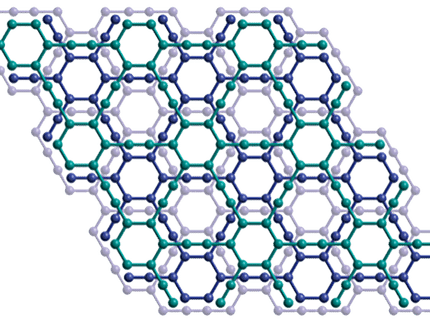Never-before-seen energy pattern observed at National High Magnetic Field Laboratory
Multiple publications based on research conducted at MagLab
Advertisement
Two research teams at the National High Magnetic Field Laboratory (MagLab) broke through a nearly 40-year barrier recently when they observed a never-before-seen energy pattern.
The butterfly-shaped pattern was first theorized by physicist Douglas Hofstadter in 1976, but it took the tools and technology now available at the MagLab to prove its existence.
"The observation of the 'Hofstadter butterfly' marks a real landmark in condensed matter physics and high magnetic field research," said Greg Boebinger, director of the MagLab. "It opens a new experimental direction in materials research."
This groundbreaking research demanded the ability to measure samples of materials at very low temperatures and very high magnetic fields, up to 35 tesla. Both of those conditions are available at the MagLab, making it an international destination for scientific exploration.
The unique periodic structure used to observe the butterfly pattern was composed of boron nitride (BN) and graphene. Graphene is a Nobel Prize-winning material that holds tremendous promise in revolutionizing computers, batteries, cell phones, televisions and even airplanes. A one-atom thick, honeycomb array of carbon atoms, graphene is virtually see-through, yet 300 times stronger than steel and 1,000 times more conducting than silicon.
"This is about a puzzle that has been solved," said Eric Palm, deputy director at the MagLab. "It is really about scientific curiosity. It is an exciting confirmation of a theory that was made years ago."
MagLab physicist Nicholas Bonesteel agreed, adding "The Hofstadter butterfly is a beautiful fractal energy pattern that has intrigued physicists for decades. Seeing clear experimental evidence for it is a real breakthrough."
Most read news
Other news from the department science

Get the chemical industry in your inbox
By submitting this form you agree that LUMITOS AG will send you the newsletter(s) selected above by email. Your data will not be passed on to third parties. Your data will be stored and processed in accordance with our data protection regulations. LUMITOS may contact you by email for the purpose of advertising or market and opinion surveys. You can revoke your consent at any time without giving reasons to LUMITOS AG, Ernst-Augustin-Str. 2, 12489 Berlin, Germany or by e-mail at revoke@lumitos.com with effect for the future. In addition, each email contains a link to unsubscribe from the corresponding newsletter.
































































